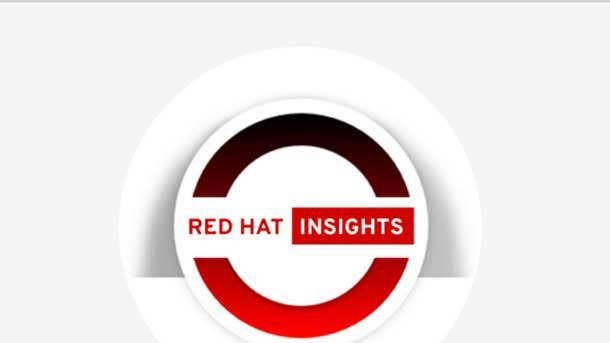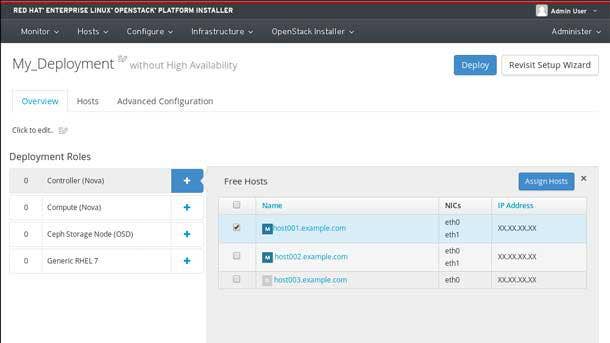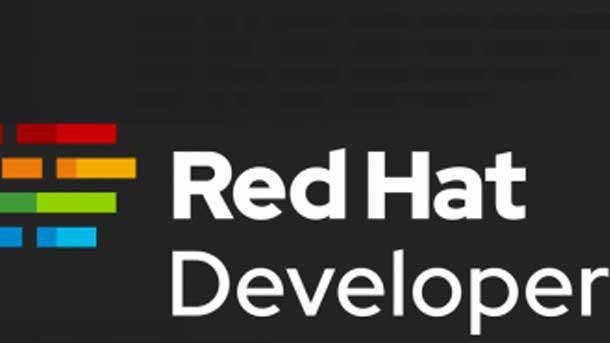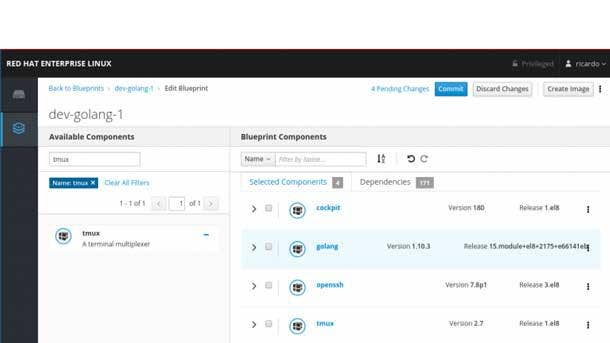9 Biggest Things To Know About Red Hat Enterprise Linux 8
RHEL 8 is another reason for channel partners to talk about Linux with customers, said Gunnar Hellekson, senior director of product management at Red Hat.

What To Know About RHEL 8
Red Hat today announced the general availability of Red Hat Enterprise Linux 8 (RHEL 8), the first major update of its flagship Linux open-source software operating system and IT infrastructure platform in five years.
The latest platform, heralded at the Red Hat Summit taking place in Boston through Thursday, comes with new features to more easily and explicitly enable hybrid-cloud deployment and ensure a customer’s continued operational consistency, even as they embrace new infrastructures, according to the Raleigh, N.C., open-source software company, which is slated to get IBM as its parent company under a $34 billion deal expected to close later this year.
RHEL 8 is another reason for channel partners to talk about Linux with customers, said Gunnar Hellekson, senior director of product management at Red Hat.
“The IT market is going through this transformation right now being driven by two big forces: One is cloud computing and infrastructure, and the other is containers and what that means for application development and deployment,” Hellekson said. “The nice thing about those two dynamics is that they're both rooted in Linux. Red Hat, of course, is the Linux leader with the majority of commercial Linux offerings out there.”
Red Hat had revealed the public beta of the RHEL 8 platform as a foundation for hybrid cloud deployments -- from enterprise data centers, bare-metal servers and Linux containers to public cloud and private clouds -- in November.
Red Hat Enterprise Linux is expected to impact more than $10 trillion in global business revenues in 2019, according to a Red Hat-sponsored IDC report.
Continue reading for a look at the new RHEL 8 features.

Upgrading To RHEL 8
Existing Red Hat Enterprise Linux subscribers can upgrade to RHEL 8, and that upgrade will be more seamless than in the past, according to Red Hat.
“Traditionally, it has not been as smooth as we would have liked,” Hellekson said. “But with Red Hat Enterprise Linux 8, this was an explicit design goal to allow for what we call in-place upgrades – that is, being able to take a running machine, run some commands, run the in-place upgrade tools on that machine and have that machine update itself to Red Hat Enterprise Linux 8. That was something we worked very hard on making possible.”
Red Hat Insights
With the release of RHEL 8, Red Hat Insights will become a core part of the Red Hat Enterprise Linux subscription at no extra cost.
Formerly sold as a freestanding product, Red Hat Insights is a hosted service that provides customers coaching on the configuration and performance of their systems, according to Hellekson.
The software-as-a-service offering provides continuous, predictive analysis of registered Red Hat-based systems to proactively identify technical threats to security, performance and stability across hybrid infrastructures, and automated remediation to help administrators resolve problems and avoid costly unplanned downtime.
“We take everything we've learned in our support system, all of our knowledge base articles and our own in-house technical and architectural expertise, and using this Insights service, we can take a look at how a customer has deployed and configured their RHEL systems and give them advice,” Hellekson said. “Rather than a traditional support model where we wait for them to call us with a problem, we're actually actively offering the guidance on how to best run their RHEL systems.”
“The idea is that every month, somebody should be able to get new advice and new coaching through that Red Hat Insights feature,” he said. “So it’s just not a matter of getting the software and keeping it updated, we’re also providing you with a steady stream of new advice over the lifetime of the product.”

Application Streams
To resolve the challenge of getting the most up-to-date language and frameworks for developers without compromising RHEL production stability, Red Hat has introduced Application Streams. Fast-moving languages, frameworks and developer tools are updated frequently in this stream without impacting core resources.
With every major release, Red Hat Enterprise Linux seems to grow in size by about 50 percent, because customers have become accustomed to trusting their operating system as a source of secure software, according to Hellekson.
“We just don’t ship an operating system,” he said. “Included in the Red Hat Linux subscription is stuff like new programming languages, web servers, (domain name system) servers, all kinds of different tools that people need to run an infrastructure.”
While each Red Hat Linux version has a 10-year life cycle, programming languages advance much more quickly than a traditional operating system.
“Acknowledging this kind of split responsibility, we've now split the operating system into kind of a base operating system, and then what we're calling Application Streams,” Hellekson said. “Application Streams…allows us to more frequently update the software that needs to be updated more frequently. This prevents something like Firefox from getting too old just by virtue of that fact that it was included in the operating system.”
Red Hat Enterprise Linux Web Console
The new Red Hat Enterprise Linux Web Console is designed to lower the barrier of entry for people new to Linux by making system administration management and monitoring tasks easier.
“For years…we've been designing Linux systems on the assumption that there's going to be someone sitting in front of it with a mouse and keyboard,” Hellekson said. “This is a graphical interface that allows you to kind of point and click and do routine maintenance, check on performance, check on your virtual machine.”

Red Hat Enterprise Linux System Roles
RHEL 8 also includes Red Hat Enterprise Linux System Roles.
System Roles are pre-configured Ansible modules that enable ready-made automated workflows for handling common, complex system administrator tasks around managing and configuring Linux in production. They’re designed to help eliminate human error as the cause of common configuration issues.
Red Hat began introducing System Roles with RHEL 7 – it was made available as a technology preview with RHEL 7.4 – but it’s made a big investment for RHEL 8, according to Hellekson.
“What System Roles provides is a consistent interface for doing those routine tasks, an interface that allows automated configuration and management systems to go perform things like setting up time servers or setting up a DNS system,” Hellekson said. “And we're making a promise that that interface will stay consistent across major versions of the operating system. In the past, if you were deploying a new version of the operating system, you'd have to go back and kind of retool.”

OpenSSL 1.1.1 And TLS 1.3 Cryptographic Standards
Red Hat Enterprise Linux 8 supports the OpenSSL 1.1.1 and TLS 1.3 cryptographic standards to enhance security. Cryptographic protection can be implemented system-wide with a single command, limiting the need for application-specific policies and tuning.
Some customers have regulatory requirements to use only certain kinds of encryption in their systems. To comply with those regulations, it has historically meant searching through hundreds of configuration files on the system to make sure that each component was using the right cryptography policy part, Hellekson said.
“We've now consolidated all that into one place, so you can set your cryptography policy in one place and have that enforced all the way across a system, which should save people a considerable amount of time, especially if they’re in regulated environments,” he said.
Red Hat Container Toolkit
Red Hat Enterprise Linux 8 delivers full support for the Red Hat container toolkit, which provides technologies for creating, running and sharing containerized applications. Based on open standards, it includes tools like Buildah, Podman, Skopeo and others.
“These container tools are now the default container tools for Red Hat Enterprise Linux, and because each tool is kind of assigned to a particular purpose, it improves the security of the container infrastructure,” Hellekson said. “The same software is the software that OpenShift is going to use when they're operating a kind of full-scale container orchestration infrastructure.”

Image Builder
One of the challenges that operators have in hybrid environments is creating consistent images.
“Operators are accustomed to working in terms of gold images – ‘I’m going to get a system configured in exactly the right way, and then I’m going to just go deploy 1,000 copies of that golden image,’” Hellekson explained. “That becomes more complicated when you're in the hybrid world, because not everything you’re deploying on looks exactly the same. Physical servers are going to look different than a virtual machine is going to look different than a public cloud.”
The Image Builder tool allows for the creation of Blueprints for what an operating system is going to look like.
“Using this Image Builder tool, an operator should be able to more easily get a consistent operating environment, regardless of what infrastructure they're running on, whereas before, that was a very manual, labor-intensive task,” Hellekson said. “You hit one button, and it creates a version based on that Blueprint that is for physical servers, and another button will create one for a virtual machine, and another for an Amazon public cloud.”
Red Hat Universal Base Image
Red Hat also announced that the Red Hat Universal Base Image for building enterprise-ready containerized applications is now generally available to all developers with or without a RHEL subscription.
Applications built with the Universal Base Image can be run anywhere, but will come with RHEL benefits and support from Red Hat when run on RHEL or the Red Hat OpenShift Container Platform.
“Because Red Hat Linux is so popular, people want to be able to build their applications on top of a Red Hat Linux Enterprise base image,” Hellekson said. “But people don't always want to run their computer on RHEL, so it doesn't really make sense to force everybody to buy a copy of Red Hat Enterprise Linux. This allows folks who, for example, are working in the upstream in the open-source communities, (to) build their application on top of the universal base image and deploy it wherever they want. It’s free, and it’s freely distributable.”